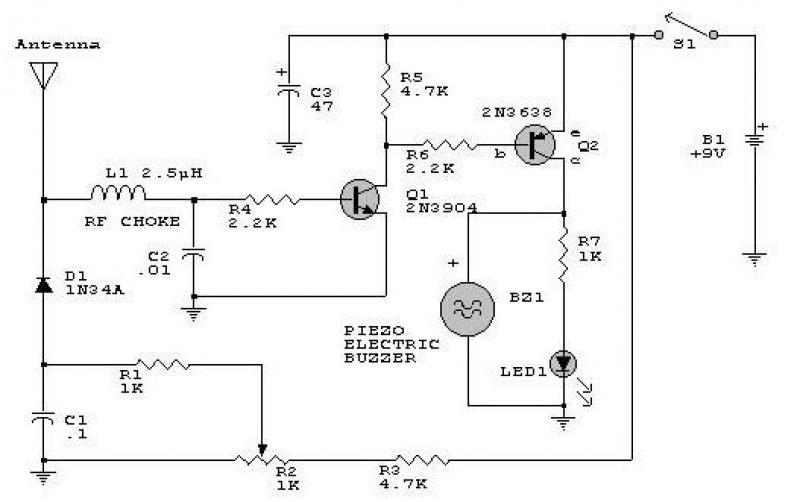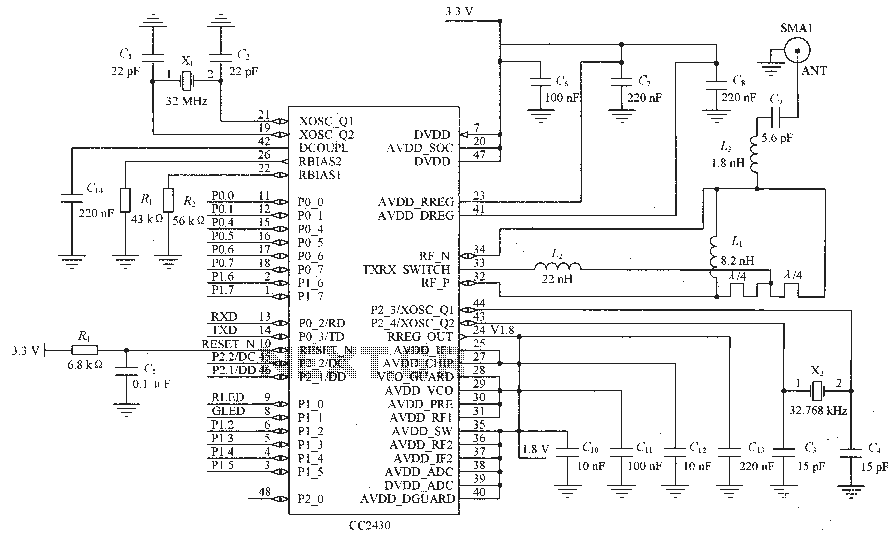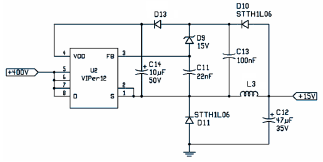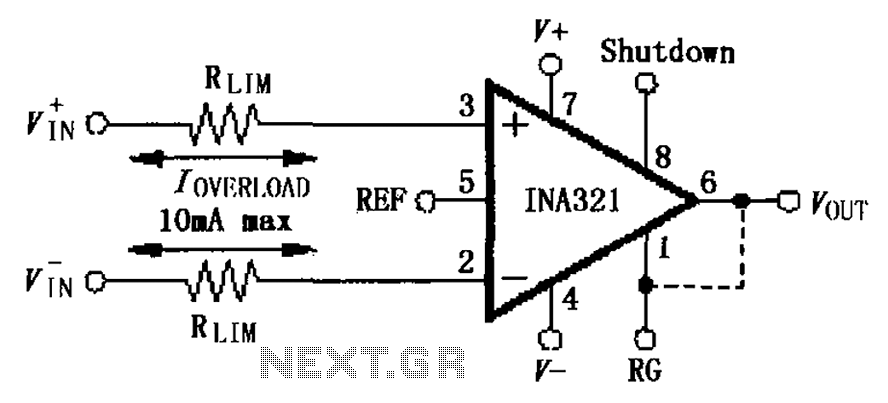
ROM and RAM Emulator for 8051
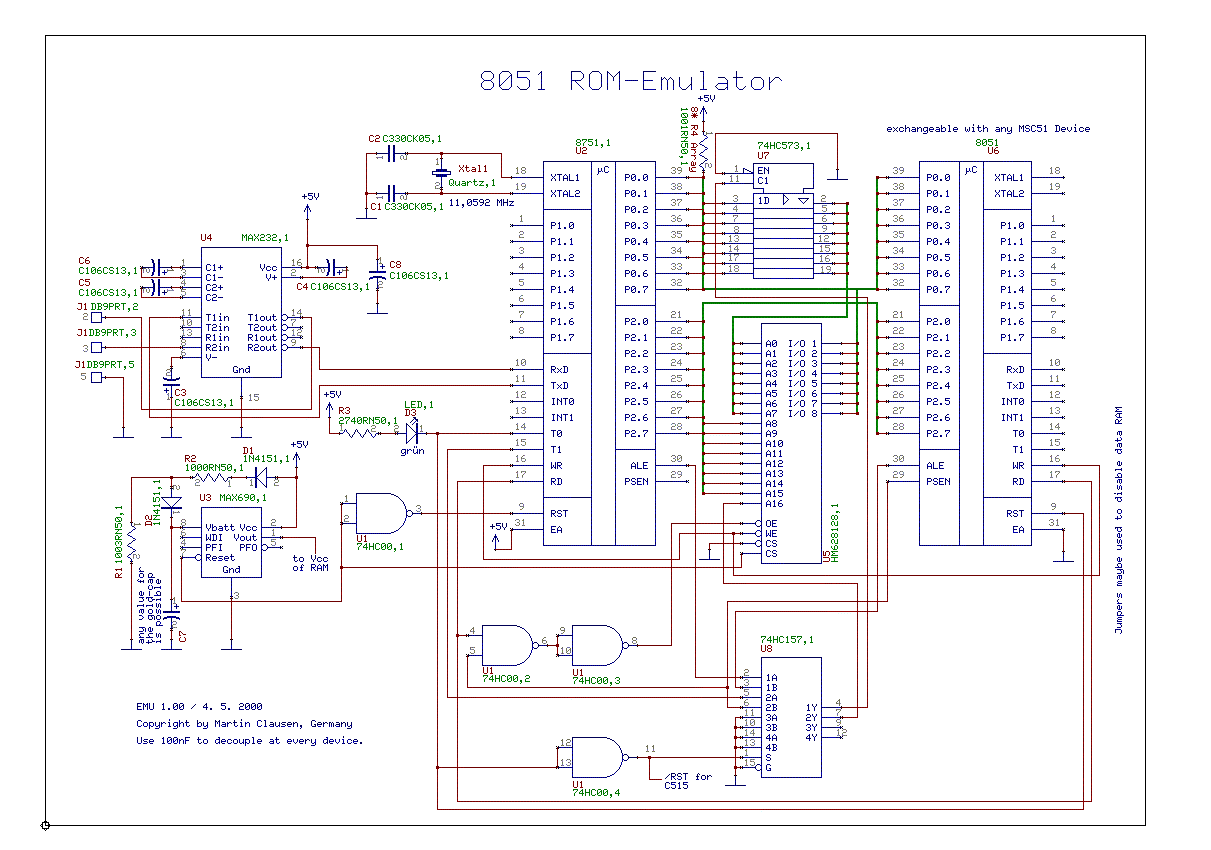
If the green LED is illuminated, the slave microcontroller unit (MCU) is activated. The MAX690 component preserves the memory contents during power-off conditions. No resources from the slave MCU are utilized. When employing a SAB-C515, it is possible to develop programs for the AT89 family easily by merely adjusting the port addresses. It is important to note that the address of the interrupt priority register in the 8051 architecture is located at the second interrupt enable register in the SAB-C515. Caution is advised when using Timer 2 (T2) of the SAB-C515, as it has been extended to include a compare and capture unit compared to the 8052. Writing logical high values to bits that are not utilized by the fundamental 8051 architecture should be strictly avoided.
The circuit involves the integration of a slave microcontroller, specifically the SAB-C515, which serves as an interface for managing peripheral devices and executing programmed tasks. The presence of a green LED indicates that the slave MCU is powered and operational, providing a visual confirmation of its status. The MAX690 is employed to ensure that the memory contents of the slave MCU remain intact during power outages or shutdowns, thus preventing data loss.
When programming the SAB-C515, developers can transition seamlessly to the AT89-family microcontrollers by adjusting the port addresses, enhancing compatibility and streamlining development processes. This flexibility is particularly beneficial in applications requiring rapid prototyping or modifications.
The architecture of the SAB-C515 includes a second interrupt enable register, which is crucial for managing interrupt priorities effectively. This feature allows for more sophisticated interrupt handling compared to the standard 8051 architecture. Additionally, the SAB-C515's Timer 2 (T2) has been expanded to function as a compare and capture unit, facilitating advanced timing operations and event-driven programming. It is essential to adhere to the guidelines regarding the manipulation of unused bits, as improper handling could lead to unpredictable behavior in the system.
Overall, the design emphasizes reliability and flexibility, making it suitable for various embedded applications that require robust microcontroller performance and efficient resource management.If the green LED is on, the slave MCU is enabled. The MAX690 keeps the memory contents during power off. No resouces of the slave MCU are used. Wenn a SAB-C515 is used, it is possible to develop programs for the AT89-family easily by changing simply the port addresses. Remember that the address of the interrupt priority register at the 8051 is at the SAB-C515 the second interrupt enable register! Be careful also when you use the T2 of SAB-C515, compared to 8052 it is extended to a compare and capture unit. Do not ever write any 1`s to bits that are not used by the basic 8051 architecture. 🔗 External reference
The circuit involves the integration of a slave microcontroller, specifically the SAB-C515, which serves as an interface for managing peripheral devices and executing programmed tasks. The presence of a green LED indicates that the slave MCU is powered and operational, providing a visual confirmation of its status. The MAX690 is employed to ensure that the memory contents of the slave MCU remain intact during power outages or shutdowns, thus preventing data loss.
When programming the SAB-C515, developers can transition seamlessly to the AT89-family microcontrollers by adjusting the port addresses, enhancing compatibility and streamlining development processes. This flexibility is particularly beneficial in applications requiring rapid prototyping or modifications.
The architecture of the SAB-C515 includes a second interrupt enable register, which is crucial for managing interrupt priorities effectively. This feature allows for more sophisticated interrupt handling compared to the standard 8051 architecture. Additionally, the SAB-C515's Timer 2 (T2) has been expanded to function as a compare and capture unit, facilitating advanced timing operations and event-driven programming. It is essential to adhere to the guidelines regarding the manipulation of unused bits, as improper handling could lead to unpredictable behavior in the system.
Overall, the design emphasizes reliability and flexibility, making it suitable for various embedded applications that require robust microcontroller performance and efficient resource management.If the green LED is on, the slave MCU is enabled. The MAX690 keeps the memory contents during power off. No resouces of the slave MCU are used. Wenn a SAB-C515 is used, it is possible to develop programs for the AT89-family easily by changing simply the port addresses. Remember that the address of the interrupt priority register at the 8051 is at the SAB-C515 the second interrupt enable register! Be careful also when you use the T2 of SAB-C515, compared to 8052 it is extended to a compare and capture unit. Do not ever write any 1`s to bits that are not used by the basic 8051 architecture. 🔗 External reference

